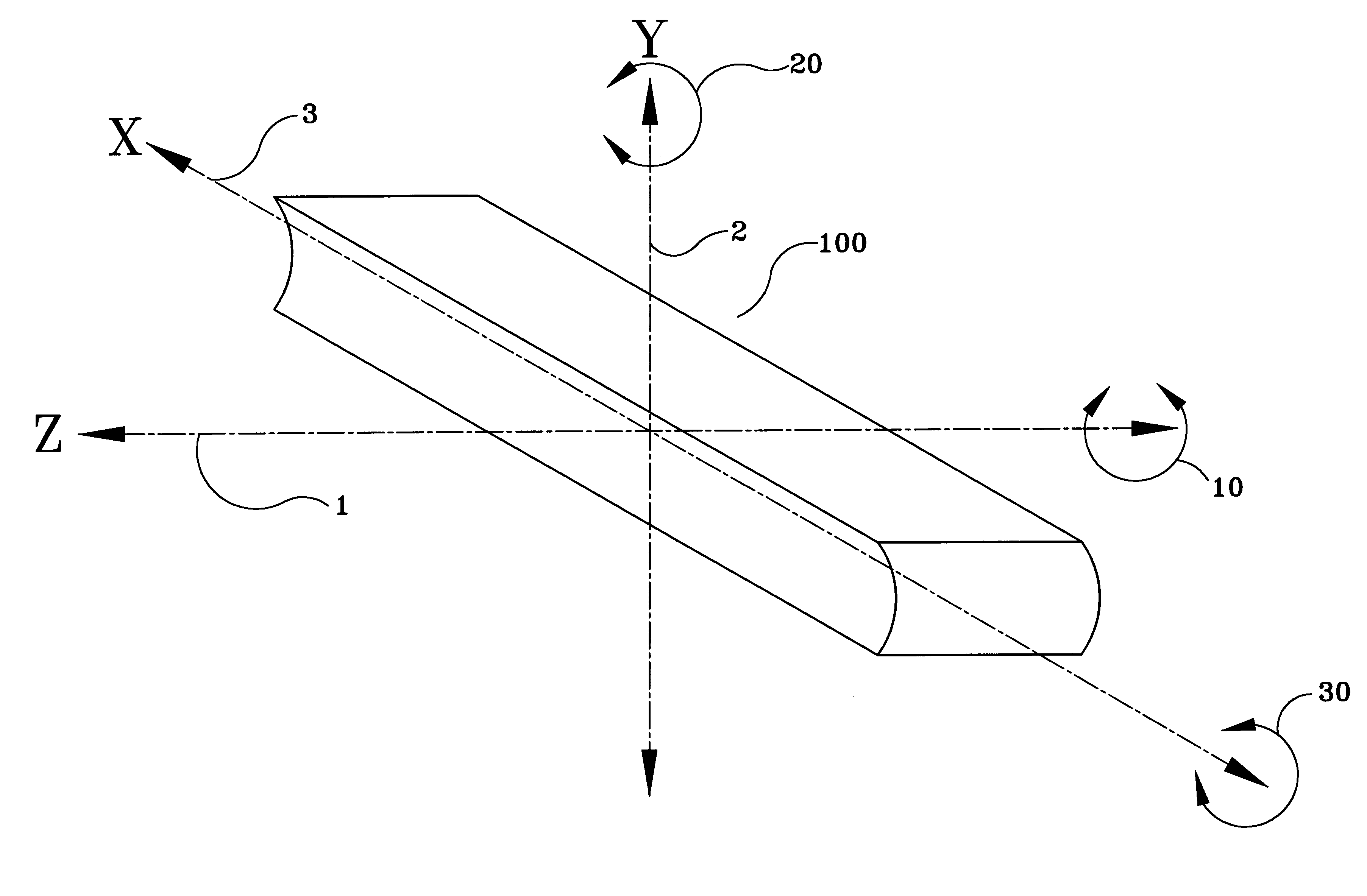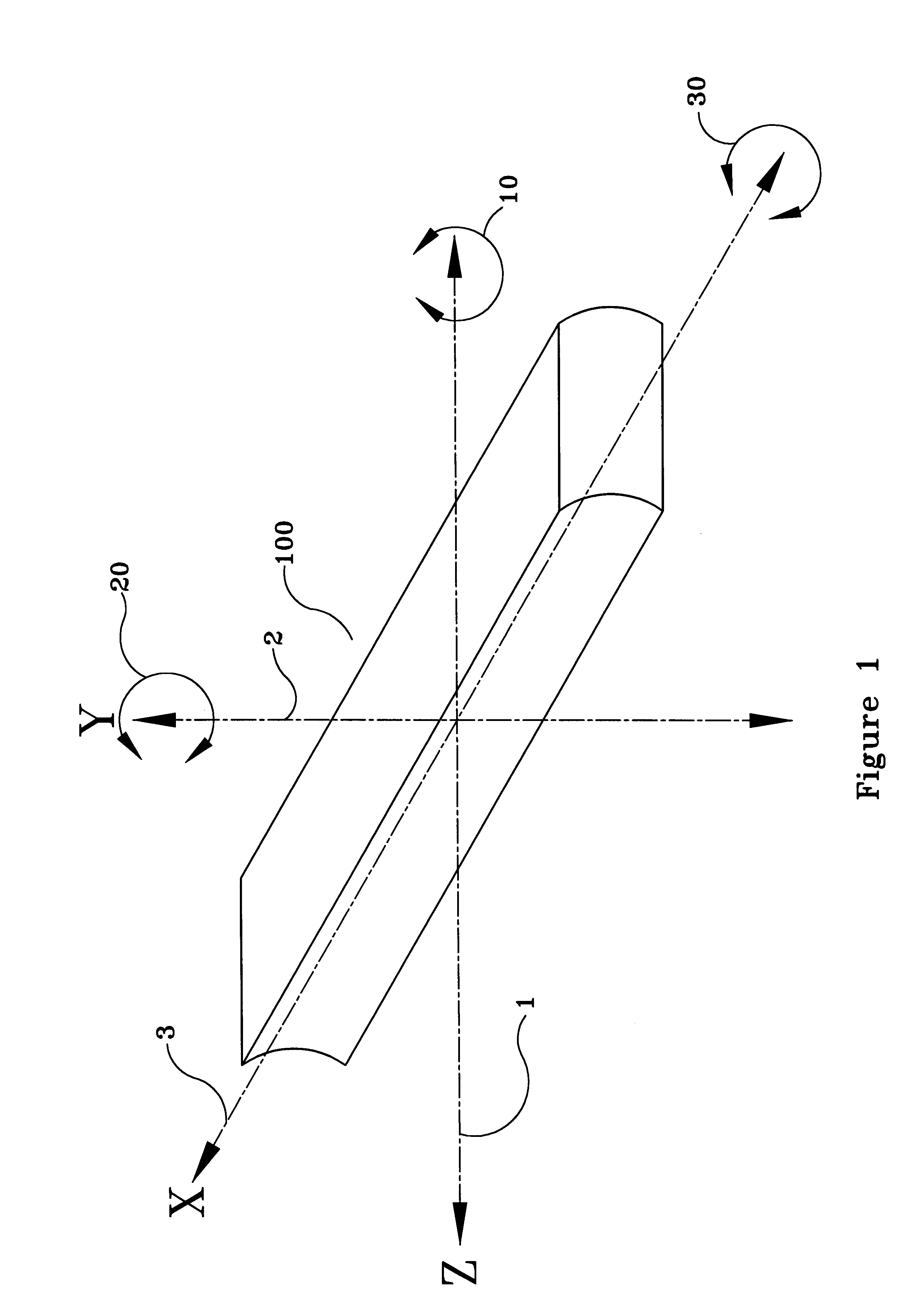Electro-optical device with integral optical element
- Summary
- Abstract
- Description
- Claims
- Application Information
AI Technical Summary
Benefits of technology
Problems solved by technology
Method used
Image
Examples
Embodiment Construction
A length of cylindrical microlens, for instance a microlens constructed in accordance with the teachings of at least one of U.S. Pat. Nos. 5,080,706, 5,155,631, and 5,181,224, is fabricated. The length of the lens should be at least equal to the diameter of the crystal wafer from which the laser diodes will be formed.
Referring now to FIGS. 2A and 2B, laser diodes are formed in the conventional manner, for instance as discussed in E. A. Gerber et al., Discrete Circuit Components; Alan B. Grebene, et al., Integrated Circuits and Microprocessors; and Richard R. Shurtz II, Semiconductor Lasers and LEDs; all in Electronics Engineers' Handbook, 3rd ed. (Donald G. Fink and Donald Christiansen, eds. 1989), which is hereby incorporated by reference. Diodes 110 are formed on the surface of wafers 200. Laser diodes may be formed on gallium arsenide wafers, and the following discussion assumes the use of gallium arsenide as the substrate for diode production. It should be noted that while galli...
PUM
 Login to View More
Login to View More Abstract
Description
Claims
Application Information
 Login to View More
Login to View More - R&D
- Intellectual Property
- Life Sciences
- Materials
- Tech Scout
- Unparalleled Data Quality
- Higher Quality Content
- 60% Fewer Hallucinations
Browse by: Latest US Patents, China's latest patents, Technical Efficacy Thesaurus, Application Domain, Technology Topic, Popular Technical Reports.
© 2025 PatSnap. All rights reserved.Legal|Privacy policy|Modern Slavery Act Transparency Statement|Sitemap|About US| Contact US: help@patsnap.com



